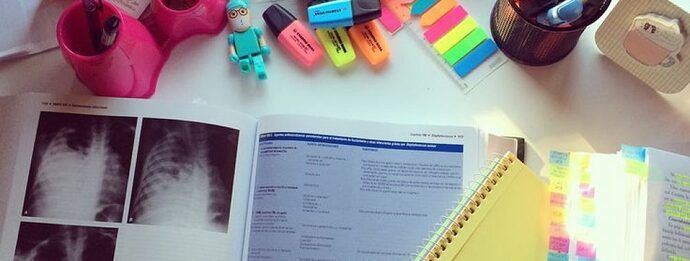Learning (and memorizing) the names and locations of anatomical structures isn’t easy, so clinical anatomy students often develop mnemonics, or memory tricks, to make it a little easier. These mnemonics include acronyms, short poems, and silly phrases that are quite effective for remembering parts of the body. Here are ten popular (G-rated) memory devices for different parts of the body, from the top to the bottom.
THE CRANIAL BONES
Your skull has six cranial bones that form the cranial vault. You don’t want to confuse them with the facial bones, so you can remember them with this phrase:
PEST OF 6
Each letter stands for a cranial bone, and the number 6 reminds you that there are six of them:
P: Parietal bone
E: Ethmoid bone
S: Sphenoid bone
T: Temporal bone
O: Occipital bone
F: Frontal bone
THE FACIAL BONES
Your face is formed by eight facial bones . Here’s a silly saying to help you remember them:
Virgil Can Not Make My Pet Zebra Laugh.
V: Vomer
C: Conchae (inferior)
N: Nasal bone
M: Maxilla
M: Mandible
P: Palatine bone
Z: Zygomatic bone
L: Lacrimal bones
THE CRANIAL NERVES
The cranial nerves are each have a name and a number, so remembering which name goes with what number can be difficult. Use this little poem to remember:
On Old Olympus’s Towering Top, A Finn And German Viewed Some Hops.
O: Cranial nerve I, olfactory nerve
O: Cranial nerve II, optic nerve
O: Cranial nerve III, oculomotor
T: Cranial nerve IV, trochlear
T: Cranial nerve V, trigeminal nerve
A: Cranial nerve VI, abducent nerve
F: Cranial nerve VII, facial nerve
A: Cranial nerve VIII, auditory (or vestibulochochlear) nerve
G: Cranial nerve IX, glossopharyngeal nerve
V: Cranial nerve X, vagus nerve
S: Cranial nerve XI, spinal accessory nerve
H: Cranial nerve XII, hypoglossal
THE HEART-VALVE SEQUENCE
The following odd sentence helps you remember how blood flows through the heart by remembering the sequence of the valves:
TRy PULling My AORTA.
The bold capital letters represent the valves, in order of blood flow:
TR: Tricuspid valve
PUL: Pulmonary valve
M: Mitral valve
AORTA: Aortic valve
ORDERING THE ABDOMINAL MUSCLES
One way of remembering the names of the abdominal muscles is to think of a spare tire, which is the nickname for the extra fat that can build up around a person’s abdomen. The word TIRE stands for the four abdominal muscles:
T: Transversus abdominis
I: Internal abdominal oblique
R: Rectus abdominis
E: External abdominal oblique
THE INTESTINAL TRACT
The intestinal tract includes the small intestine, the colon, and the rectum. Use this phrase for remembering the parts of the intestinal tract and their sequence:
Dow Jones Industrial Climbing Average Closing Stock Report
The first three bold letters represent the three segments of the small intestine. The rest help you remember the colon and the rectum:
D: Duodenum
J: Jejunum
I: Ileum
C: Cecum
A: Appendix
C: Colon
S: Sigmoid colon
R: Rectum
THE ROTATOR CUFF MUSCLES
Four rotator cuff muscles run from the scapula to the humerus and work together so you can rotate your arm. They’re usually remembered by the acronym SITS:
S: Supraspinatus
I: Infraspinatus
T: Teres minor
S: Subscapularis
THE CARPAL BONES
Eight carpal bones form the wrist. They’re arranged in two rows, with four bones in each row. Following is a phrase that can help you remember them:
She Looks Too Pretty; Try To Catch Her.
The bold letters stand for each carpal bone. The first four form the proximal row (closer to the arm) starting laterally (thumb side). The second group of four make up the distal row (closer to the hand), also starting laterally:
S: Scaphoid
L: Lunate
T: Triquetrum
P: Pisiform
T: Trapezium
T: Trapezoid
C: Capitate
H: Hamate
THE LATERAL ROTATOR MUSCLES OF THE HIP
Six of hip muscles rotate the hip laterally. Following is a phrase that will help you remember them:
Piece Goods Often Go On Quilts.
The bold letters represent the hip rotators, in order from most proximal to most distal:
P: Piriformis
G: Gemellus superior
O: Obturator internus
G: Gemellus inferior
O: Obturator externus
Q: Quadratus femoris
THE TARSAL BONES
You can remember the tarsal bones with this sentence:
The Circus Needs More Interesting Little Clowns.
T: Talus
C: Calcaneus
N: Navicular
M: Medial cuneiform
I: Intermediate cuneiform
L: Lateral cuneiform
C: Cuboid
